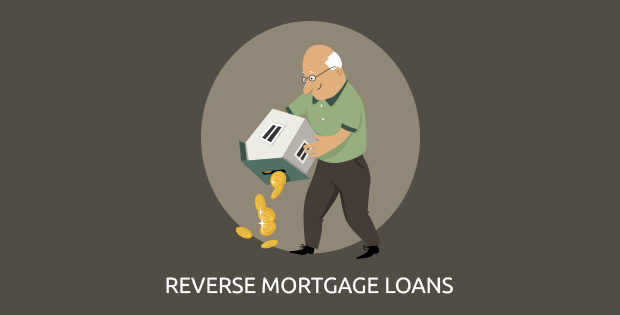
- About Us
- OUR OFFERINGS
- CALCULATORS
- RESOURCE CENTRE
-
Quick Links
- Existing Customers Benefits
- Become a Partner
- Pre-Approved Projects
- Home Loan App
- Blog
- CSR
- Locations
- Roi Switch Policy
- Co-Lending Policy
- Co-Lending Partnerships
- Customer Sensitization Program
- ROI Range
- Borrower Education - SMA/ NPA classification
- Borrower Awareness - RBI Ombudsman Scheme
- Borrower Awareness - procedure for handover of property documents
- NEWS CORNER
-
INVESTOR RELATIONS
- Financial Reports
- Investor Presentations
- Annual Reports
- Notices
- ESG Profile
- IEPF
- Investor Call Transcript
- Corporate Announcement
- Public Issue of NCD'S
- Qualified Institutional Placement
- Investor Relations Contact
- Familiarisation Programmes
- ISO CERTIFICATIONS
- Forms for Shareholder KYC-PAN-Nomination update
- Credit Ratings
- Statutory Advertisements
- ODR Portal
- Rights Issue
- Sustainable Financing Framework
- CONTACT US
- Login
 Apply
ApplyOnline

India's 1st Completely Online Home Loan!
-
e-APPLY
-
e-SANCTION
-
e-DISBURSE
Start your eHome Loans Process Now!
Apply OnlineLoan to value ratio explained in detail

- Jun 21, 2019
- VIEWS: 10016
Loan to value ratio explained in detail
Buying a home is a financial milestone we all hope to achieve. There is a sense of financial security when you have a property you can call your own. With the real estate prices escalating with every passing year, an owned property can prove to be a great financial asset. But the fact is that most people can become property owners only by taking out a home loan. When you do opt for a home loan, you have to consider a lot of factors. These include the loan interest rate, the tenure of the loan and the equated monthly instalments that need to be paid throughout the loan tenure. However, borrowers should also pay attention to one more, crucial aspect of the loan i.e. the loan to value ratio. Let’s find out more about it in this article.
What is loan to value ratio?
The loan to value ratio, often abbreviated is the LTV ratio refers to the proportion of the value of a property that a lender agrees to finance when you take out a loan. All lenders and financial institutions, whether they are banks, non-banking finance companies or even housing finance companies use the LTV ratio in order to assess their risk in providing a loan to borrowers. The LTV ratio plays a crucial role, and is especially considered in case of high value loans like home loans, where the lender has to sanction several lakhs, if not a few crores as home loan.
Lenders essentially use the Loan to value ratio in India and abroad in order to calculate and ensure that they do not provide loans that exceed the actual value of the property for which the loan is taken. For lenders, this is simple math i.e. if the loan to value ratio increases, so does the perceived risk of loan defaulting on the part of the borrowers.
How to calculate LTV ratio?
The LTV ratio is typically calculated in percentage. LTV ratio calculation is done with the help of the below mentioned formula:
LTV ratio = (Amount borrowed/ value of property) x 100
Let’s look at this with the help of an example
Let’s say you wish to purchase a 2BHK flat worth ?10,000,000 in Mumbai’s Thane neighbourhood. Now let’s say you approached a non-banking finance company, India Bulls Housing Limited for instance for the loan. Now, if IBHL’s LTV ratio is approximately 70 percent, then you can get a maximum home loan of approximately ?7,000,000. This simply means that you have to make a down payment of ?3,000,000. IBHL needs to set this loan to value ratio in order to manage the risks associated with lending against the property (asset) you wish to purchase. As such, LTV is simply the percentage of the value of asset that can be provided as home loan.
LTV ratio and RBI guidelines
Both lenders and borrowers also have to consider loan to value ratio RBI guidelines. As per the guidelines laid down by the Reserve Bank of India, all financial institutions have to follow some fixed guidelines. For instance, if a borrower takes a home loan of ?3,000,000 or less, then he can get a high LTV value of 90% of the actual value of the property. A high LTV value reduces the down-payment considerably and he would only have to bear 10% of the property value as down payment. The rest of the amount can be financed through the loan.
As per another loan to value ratio RBI guideline, the LTV ratio of loan amounts between ?3,000,000 and ?7,500,000 can go up to approximately 80%, whereas the LTV ratio for loans above ?7,500,000, can be 75%. Lenders should therefore consider the LTV ratio to get an affordable down payment amount.
Final thoughts: When you apply for a home loan, the lender typically informs you about the loan value ratio upfront, basis the RBI guidelines. A lower LTV ratio means that you can get better loan tenures and interest rates on your home loan. Having a lower LTV ratio gives you room to negotiate the interest rates with your lender and even increase the loan tenure if required.
No Comments
Subscribe
Most Viewed Blogs
Categories
- Home Loans Guide 125
- Home Renovation Loan Guide 3
- Home Loan Transfer Guide 14
- Home Extension Loans Guide 1
- Loan Against Property Guide 28
- Home Loan Interest Rates Guide 2
- Others Guide 8
- Home Decor & Lifestyle Guide 5
- Plot Loan Guide 3
- PMAY Guide 5
- Uncategorized Guide 1
- NRI Home Loans Guide 5
- Financial Resolutions Guide 1
- New Year Resolutions Guide 1
Archives
- Mar 2020
- Jan 2020
- Nov 2019
- Jul 2019
- Jun 2019
- May 2019
- Apr 2019
- Mar 2019
- Feb 2019
- Jan 2019
- Dec 2018
- Nov 2018
- Jul 2018
- Jun 2018
- May 2018
- Apr 2018
- Mar 2018
- Feb 2018
- Jan 2018
- Dec 2017
- Nov 2017
- Oct 2017
- Sep 2017
- Aug 2017
- Jul 2017
- Jun 2017
- May 2017
- Apr 2017
- Mar 2017
- Feb 2017
- Jan 2017
- Dec 2016
- Nov 2016
- Oct 2016
- Jun 2016
- Apr 2016
- Mar 2016
- Feb 2016
- Jan 2016
- Dec 2015
- Nov 2015
- Oct 2015
- Sep 2015
- Aug 2015
- Jul 2015
- Jun 2015








